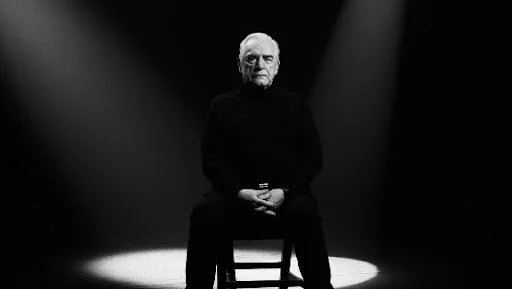Dying to Change the World: Thoughts and reflections
Dr Andrew Singer, Principal Scientist at the UK Centre for Ecology and Co-Investigator of the Digital Health Hub for AMR, recently attended the advanced screening of a new documentary, Dying to Change the World, bringing the devastating impact of AMR to life through storytelling and expert insights. Featuring narration by Brian Cox as the voice of AMR itself, the film combines cinema with real-world testimonies from leading scientists and advocates. Read his reflections in the blog below.
I had the privilege of being invited to attend an advanced screening of the documentary Dying to Change the World, hosted by the Fleming Initiative and produced by Alex Tweddle, a filmmaker.
The piece was a high-quality documentary drama using drone camera techniques and featuring the world view of a character known as AMR (a role played and narrated by Brian Cox). In the piece, the character personifies antimicrobial resistance as a weapon to destroy the world and the individuals in it. Cox uses a chilling voice-over that links different parts of the film as he plots his strategy and zooms in on the most vulnerable communities and individuals, giving audiences a clear understanding of the communities most at risk. These scenes are juxtaposed with live interviews with experts on AMR commenting on their research and experiences across various academic and scientific fields. This carefully selected group is led by Dame Sally Davies, a key advocate of AMR stewardship who was heavily involved in the film's production and dissemination.
The testimonials of medical experts whose work is made desperately complicated by increasing resistance to MRSA was moving and affecting. Two oncologists and paediatric surgeons described successful operations to remove cancerous tumours to save the lives of young children, only to find their efforts thwarted by infections resistant to antibiotics, taking the lives of their patients within days of surgery. These heartbreaking interviews were then replaced by fly on the wall zoomed-in montages of places and situations where environmental AMR is contributing to the overall speed of mutation and to more and more drugs becoming ineffective.
One of the memorable scenes was of pigs in Denmark, farmed in distressing conditions and then transported for 22 hours across land in huge lorries, to an abbatoir on the outskirts of Germany. The conditions in the lorry meant that pigs were five per square metre, with no food or water or anywhere to defecate other than on each other. This resulted in them screaming and biting one another, at a pitch audible to those following the lorry, and arriving covered in their own waste and blood from their open wounds to a huge building that had haunting overtones of the Holocaust. This imagery was so chilling that members of the audience were in tears at this point.
I also found it shocking to realise that all pigs, regardless of their rearing, will be slaughtered in the same abattoir. It was suggested that this reality is likely to undo some of the efforts made by growers to produce animals without antibiotics, as the cross-contamination can transfer antibiotic-resistant microbes from one pig (i.e., one reared with antibiotics) to another (i.e., one reared without antibiotics) before or even after slaughter. The movie didn’t quantify the extent to which this is a problem for AMR, but it raised my eyebrows and made me curious as to what extent this is happening elsewhere and not just in Denmark.
I had the advantage of experiencing it from the point of view as a scientist working in the field for over a decade, and it still delivered some new information and perspectives to me. I attended with my partner, who is not a scientist, and it was interesting to see that she found the film’s message about the urgent threat of AMR and the critical roles individuals and governments must play in shaping policy both clear and engaging. It left her with a strong sense that anyone can be a campaigner or advocate for change; that we all have a role to play.
The evening was framed by a panel discussion, chaired by Dame Sally Davies, which included Vanessa Carter, a survivor of a severe infection that was resistant to antibiotics and who had become a patient advocate. Her story, alongside the testimony of Lord Darzi who is a patron of the film and a surgeon, and the words of the film maker, whose mother died of sepsis during the making of the film, made for a hard hitting but fantastic introduction to the work that has gone into creating this novel film, making complex science accessible to everyone.
Source: British Council
